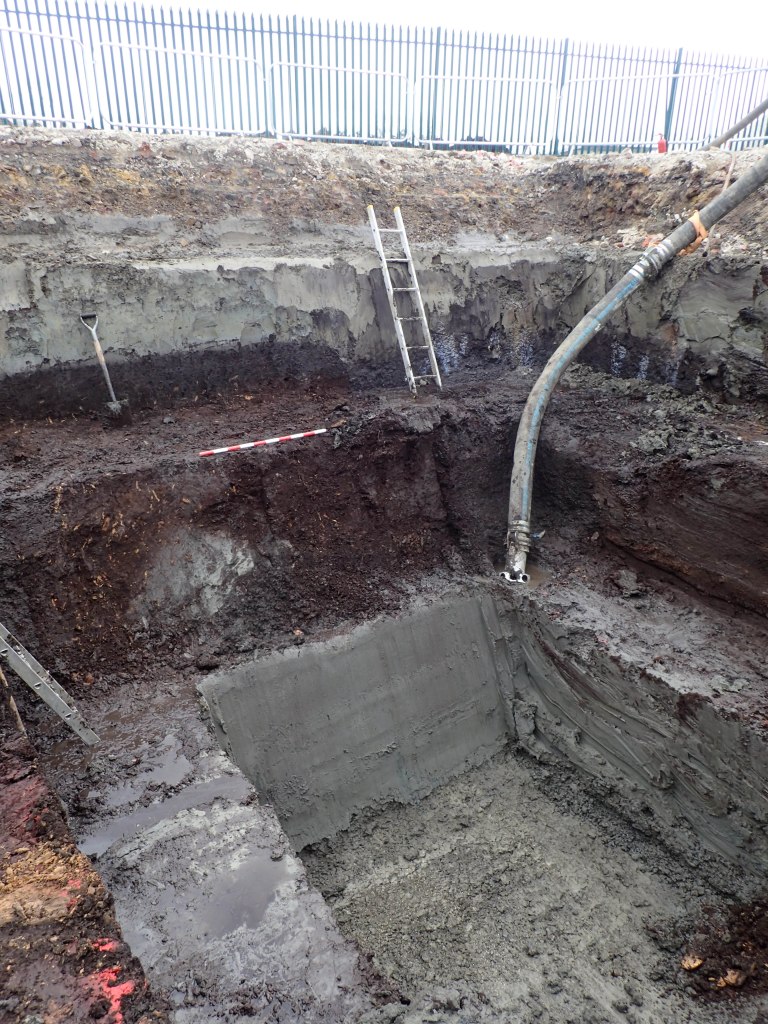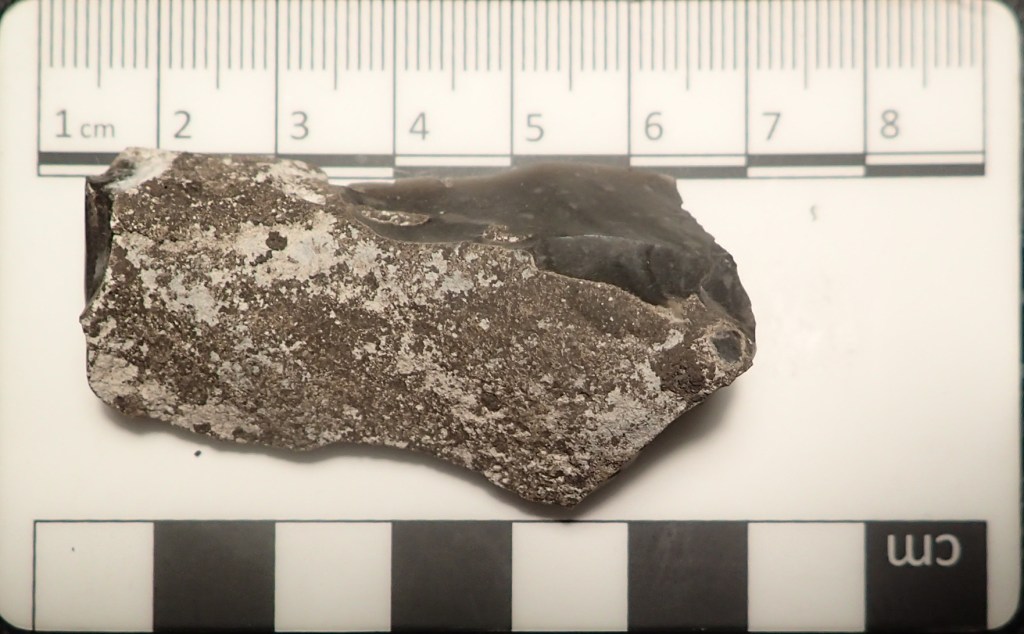This site was wrapped on Wednesday in terrible weather conditions, with unfortunately no evidence of the Neolithic trackways we had hoped to find!
However, the worked flint we shared last week has now been studied by our lithics expert Barry who describes it as:
'a narrow but thick decortication flake of semi-opaque mottled dark grey / black flint in a sharp condition, indicating that it had not moved far from where originally discarded. It has a wide facetted striking platform, a diffuse bulb of percussion and a hinged distal termination. Its dorsal surface is c. 70% covered by a rough but weathered cortex and it also has two dorsal scars from flakes struck in the same direction as this was detached. Dating is imprecise with decortication flakes but a Neolithic date for this would perhaps be most appropriate.'
Trenches 1 and 2 were both excavated down to the gravels, revealing an identical sequence of terrace gravels overlain by lower alluvium, peat and then upper alluvium. The photo below shows the full sequence down to the gravels in trench 3 (before it filled with water!). In this trench the peat layer increased in thickness towards the north and east to 1.62m which appears to show a thickening wedge in that direction.
The peat layers – where they could be examined in detail – appeared to be more complex or at least displayed more variation in their make-up. All layers were sampled environmentally.
Trench 2 was problematic as removing a former fuel tank had de-stablized the trench and this, along with the results of heavy rainfall, meant that only a sondage could be attempted; this did still confirm the sequence.




